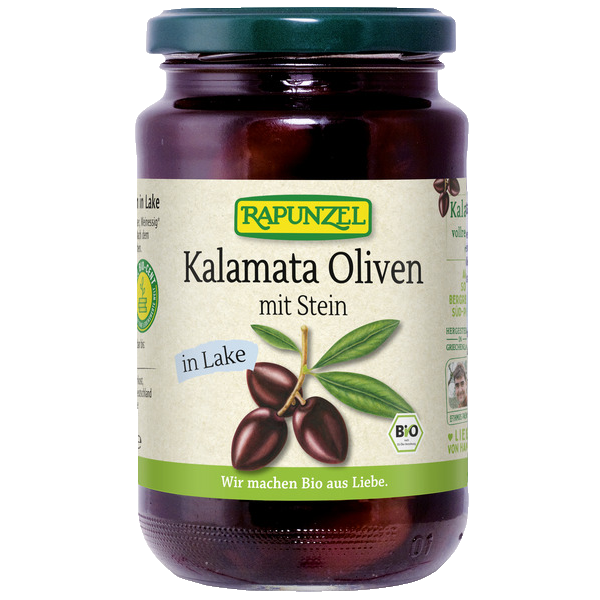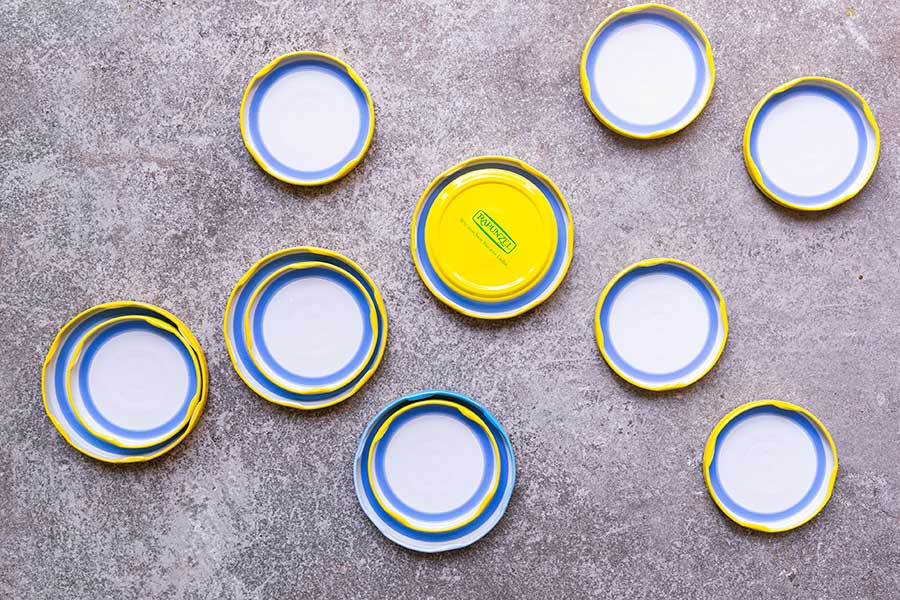Kalamata' olives are characterized by their aromatic flavor and their multi-colored skin. The color intensity of the olives varies depending on their exposure to the sun and the place where they grow on the olive tree. Skin colors may range from dark pink, purple to brown or ebony. The olives are cultivated with tender care by small peasant farmers in mountainous areas of Southern Peloponnese (Greece) and are manually harvested. They are then pitted and traditionally pickled in brine.
Ingredients
olives* (59,50%) (olives*, sea salt), water, wine vinegar*
* = ingredients from organic farming
** = from biodynamic agriculture
olives* (59,50%) (olives*, sea salt), water, wine vinegar*
* = ingredients from organic farming
** = from biodynamic agriculture
Usage
ideal for antipasti, with salads or as tapa served with wine - as well as for noodle dishes and sauces, as pizza topping or for bread baking.
ideal for antipasti, with salads or as tapa served with wine - as well as for noodle dishes and sauces, as pizza topping or for bread baking.
Additional information
Preparation
The olives are manually picked. Harvest-fresh olives are very bitter and inedible. Therefore, the olives are stored in water and sea salt for several months in great, big barrels in order to remove the bitter substances. For dark olives, the de-bittering process takes longer than for green olives. Finally, the olives are filled in glass jars in a brine with water, wine vinegar and sea salt. For preservation, the olives are heated.
Produced in
Greece
Country of origin
greek agriculture
Origin of the main ingredients
Greece
Quality
EU Bio-Logo
Storage advice
After opening store jar in a cool place and use up as soon as possible. Keep olives covered with brine.
Legal name of the food product
Kalamata olives in brine
| Calorific value | 1043 kJ / 253 kcal | |
| Fat | 26,00 g | |
| of which saturates | 3,20 g | |
| Carbohydrates | 1,80 g | |
| Sugar | < 0,50 g | |
| Dietary fiber | 2,7 g | |
| Protein | 1,40 g | |
| Salt | 2,200 g |
Allergens
| Eggs and products thereof | not contained | |
| Peanuts and products thereof | not contained | |
| Fish and products thereof | not contained | |
| Cereals containing gluten or cereal products | not contained | |
| Crustaceans and products thereof | not contained | |
| Milk and products thereof including lactose | not contained | |
| Lupins and products thereof | not contained | |
| Nuts and products thereof | not contained | |
| Celery and products thereof | not contained | |
| Mustard and products thereof | not contained | |
| Sesame seeds and products thereof | not contained | |
| Soy and products thereof | not contained | |
| Sulfur dioxide or sulfites (more than 10mg/kg or 10 mg/l SO2) |
no | |
| Molluscs and products thereof | not contained |
Mit großer Sorgfalt pflegen wir unsere Online-Produktdatenbank. Dennoch können wir vereinzelte Fehler nicht ausschließen. Daher bitten wir Sie, diese Angaben immer mit dem Etikett des jeweiligen Produktes zu vergleichen. Sollten Ihnen Unstimmigkeiten auffallen, sind wir dankbar für einen Hinweis an kundenservice@rapunzel.de.
FAQ about Olives Kalamata violet, with pit in brine
Olives that are preserved in oil do not need to be pasteurised, they are of raw food quality
The Greek oiled and herb marinated Rapunzel olives are also not pasteurised and retain their high raw food quality due to the gentle processing. They are available as green, black or mixed olives
The oiled olives from the Turkey Project are produced according to traditional Turkish fermentation methods and pasteurised to increase shelf life.
Rapunzel olives in jars, which are preserved in brine, are pasteurised.
mehr erfahren
mehr erfahren


